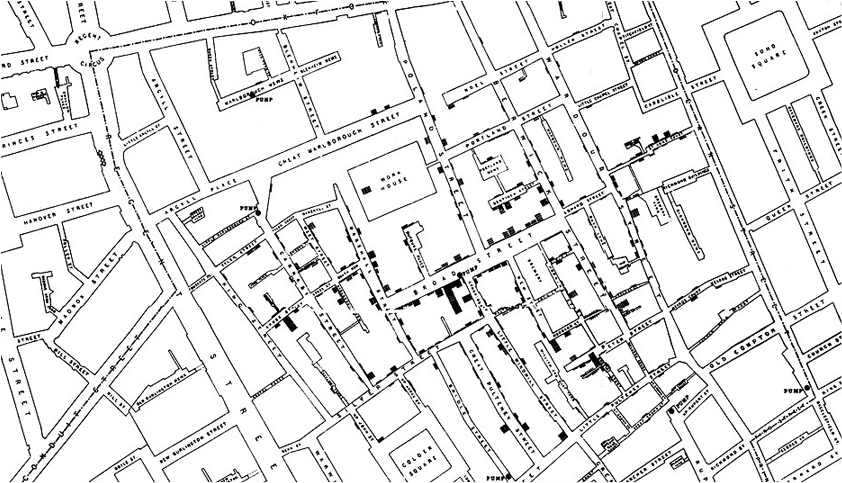What’s in a name? How about a constant reminder of the ethos that inspires Broadstreet.
As we start 2021 full of hope for a better year than the last, at Broadstreet we have been reflecting on the key contributions epidemiology and epidemiologists may have in making that happen. Many of us at Broadstreet are trained in epidemiology and it has long been a joke here that people either have no idea what we do or they think we’re dermatologists. So, it has been remarkable to watch epidemiological terms and concepts become part of everyday life over the last year (even if they are sometimes used in ways we would consider not strictly accurate!) as we all try to understand this terrible pandemic that has so dramatically changed our lives. With this sudden interest in epidemiology, we thought this might be a good moment to talk a bit about how we came to choose the name Broadstreet, because while it’s perhaps immediately obvious to epidemiologists, the reference might be a bit obscure for people outside the field.

To us, our name is a reminder of the importance of using critical thinking skills to identify meaningful patterns because these patterns that can translate into important outcomes for the larger population. It was inspired by one of the founding fathers of the science of epidemiology and a milestone moment in the field. In the mid-1800s there was a cholera outbreak in London and local physician John Snow was determined to understand why some people were getting very sick, while others were not. He went door-to-door visiting homes to identify sick individuals and used that information to create a map showing patterns of life and death. Sounds very much like the work of contact tracing now, doesn’t it? Well, at the time, it was revolutionary.
Snow’s map revealed that the people with cholera were drawing water from a specific pump on Broad Street while those getting water from other sources remained healthy. According to lore, Snow used his map of visual data collection to convince town officials to shut down the Broad Street pump and, in doing so, saved hundreds of lives. Because of his approach of assessing disease through patterns and environmental factors, John Snow is regarded as the father of modern epidemiology and one of the first information designers in healthcare.

Snow’s influence on infectious disease management was never so obvious as it is now in our management of the COVID-19 pandemic. The contact tracing discipline at work draws its scientific roots from Snow’s “shoe leather” research in identifying sick households during the cholera epidemic. And Snow’s map can be seen as the genesis of everything from the maps you see tracing how COIVD has spread and where it is concentrated to this visualization from a local health authority showing how a single case leads to the spread of COVID thorough the community.
At Broadstreet HEOR, our name pays homage to John Snow’s life saving innovation and we embrace the ethos of his revolutionary strategy, with our commitment to rigorously capturing, analyzing and interpreting evidence to understand the patterns of disease. Our name and now the influence of John Snow we see everywhere around us today serve as a reminder of the importance of that attention to detail.
——————————————————————————————————————————
If you are interested in learning more about John Snow we highly recommend Stephen Berlin Johnson’s book Ghost Map (the author also has a fascinating COVID-19 podcast)
